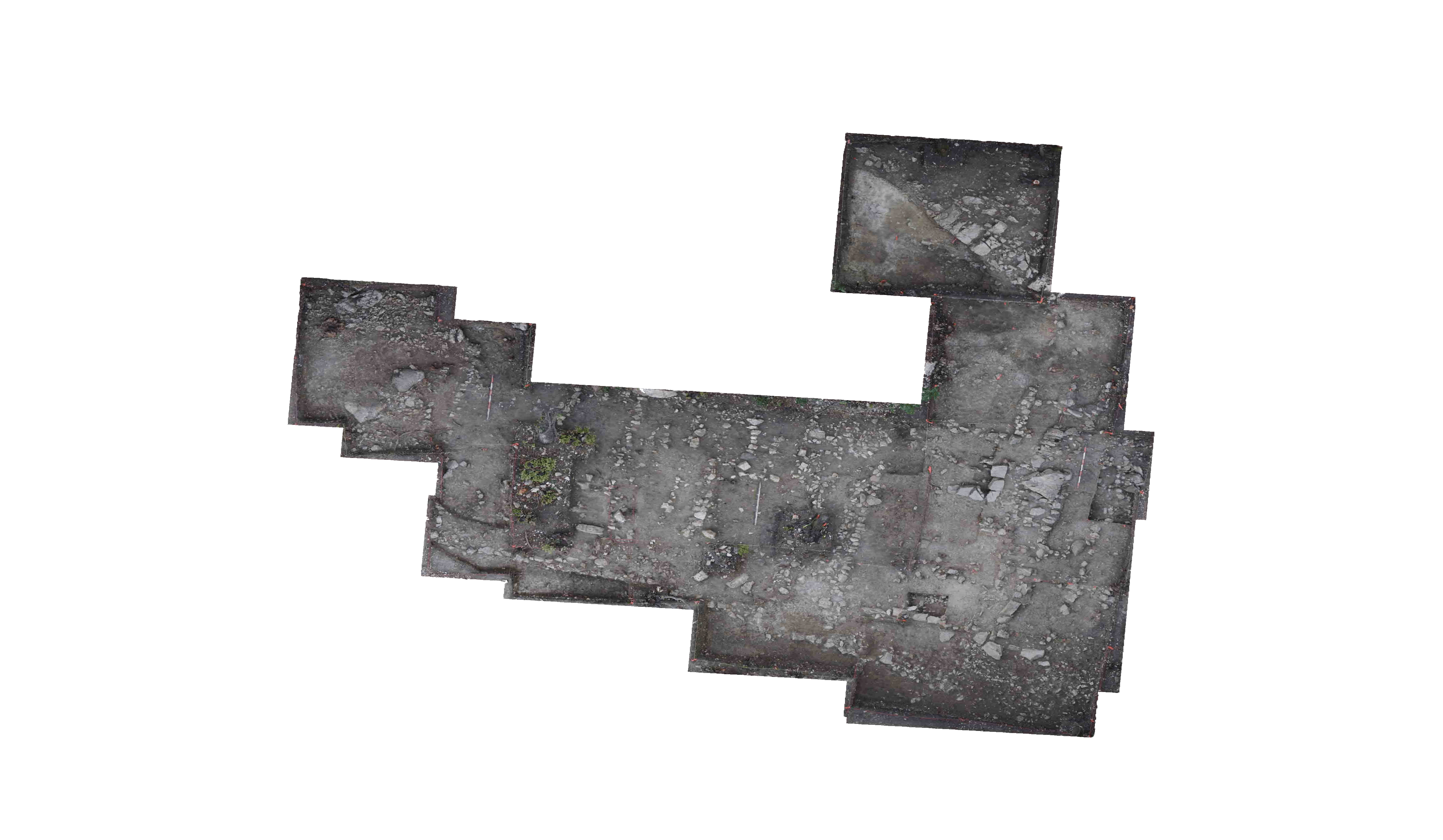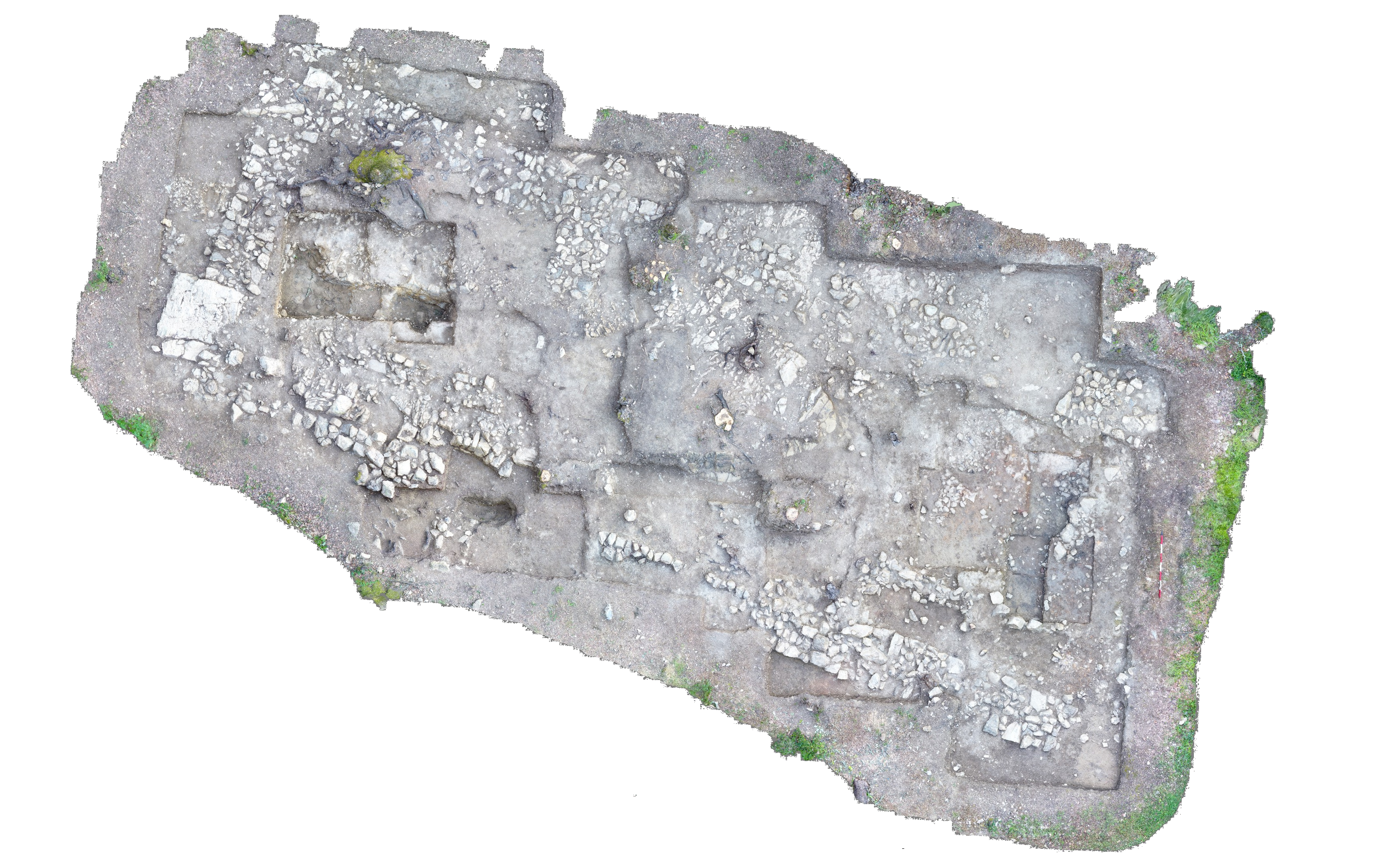Document Content
Pottery Summary
Pottery Summary
T-26, Meters M-O/64-71, produced a generally representative selection of pottery with no completely unknown material.
Densities of pottery may be summarized thusly: In surface soil (to circa 20-30 cm b.s.) there was generally little or no pottery. In subsurface layer running from circa 20-30 cm to 55-80 cm, pottery densities steadily increased with large amounts coming out in meters M-O/64-68 in depths 50-85 cms. Similar depths in meters M-O/69-71 produced significantly less pottery. This latter observation may relate to the fact that the M-O/69-71 meters at these depths were more often verging on or being in the "plaster layer" (see NM II, pps. 97-99 for discussion of soil in M-O/66-68 in depths 60-85 cms). The upper reaches of the "plaster layer" were in general devoid of significant pottery concentrations,
and it was not until the lower parts of this layer, and the succeeding "burn layer" (where the latter was encountered) that pottery concentrations again were significant. Almost without fail, where a "burn layer" was encountered, pottery concentrations were very high. How this observation on pottery densities wihin the plaster and burn layer encountered in M-O/66-71 relate to pottery densities in M-O/64-65 where no such strata were encountered is not clear. In M-O/64-65, barren (typically so) surface soil gave way to increased pottery circa 30-60 cm, which then increased again (remainin steady) from ~60-100 cms. These concentrations (changes therein) roughly parallel the significant stratigraphic features of M-O/64-65.
Types of pottery encountered and their relative distribution in T-26 M-O/64-71 may be summarized thusly: coarseware/impasto, bucchero/buccheroid, orangeware/redware, greyware and creamware.
Distinctions between impasto and coarse are the former is thinner walled, better levigated. Between bucchero and buccheroid, similar distinctions with the additional factor of even black color across the section in bucchero, and a less dark biscuit for buccheroid. For orange and red wares, the disctinction is primarily one of better levigation and higher fire for the red ware. Orangeware can be found in various degrees of quality all the way from "coarse" to quite fine, though creamy.
Surface soil almost univerally produced impasto, coarse, and heavy orange ware pottery. Stray fine ware was recovered.
Subsurface soil continued relative concentrations of above types, but now included also some bucchero, buccheroid, finer orange wares, and the occasional red or grey ware. The same can be said for depths below circa 55-85 cm. In no cause, without statistical analysis, can it be said that the proportion of fine wares was higher at lower levels as where pottery was most numerous, i.e. the burn layer, impasto was
by far the dominant fabric. Exceptions to this general observation may be made in instances where fine ware concentrations were noted, so in O/69 85-95 cm (see NM II, pps. 85 , 97 , and 101 ) M/66 80-90 cm (see NM II, pps. 183 and 193 ) and M-O/64-66 c. 90-100(105) cm (see NM II, pg. 219 ). In all instances mentioned, these concentrations were in associations that separated them from the general stratigraphy, both in soil type and finds-association.
M-O/64-66 deserve special mention because of the variety and quality of fine wares produced in this area. 1990 excavations will include further investigation of the environs.
All the pottery from T-26 M-O/64-71 was saved, metered out on 4 tables in the magazzino, and will be worked on in 1990. The main reason for this was the large number of find ware fragments that were found at lower levels. These preserve joins from previous years excavated materals, and may provide important profiles.
| Descriptive Attribute | Value(s) |
|---|---|
| Document Type | Trench Book Entry |
| Trench Book Entry Date | 1989-07-31 |
| Entry Year | 1989 |
| Start Page | 284 |
| End Page | 291 |
| Title | Pottery Summary |
| Descriptive Attribute | Value(s) |
|---|---|
| Is Part Of Vocabulary: DCMI Metadata Terms (Dublin Core Terms) | NM II Vocabulary: Murlo |
Suggested Citation
Nathan Meyer. (2017) "NM II (1989-07-31):284-291; Pottery Summary from Europe/Italy/Poggio Civitate/Tesoro/Tesoro 26/1989, ID:134". In Murlo. Anthony Tuck (Ed). Released: 2017-10-04. Open Context. <https://opencontext.org/documents/fd14811a-c3b4-4628-89da-10aa86e6e2fc> ARK (Archive): https://n2t.net/ark:/28722/k2zg6xj8m

Copyright License
To the extent to which copyright applies, this content
carries the above license. Follow the link to understand specific permissions
and requirements.
Required Attribution: Citation and reference of URIs (hyperlinks)







